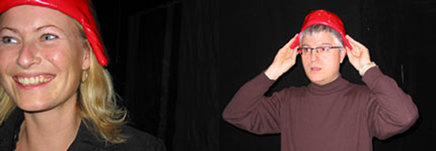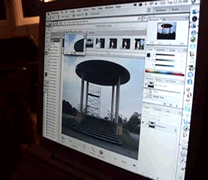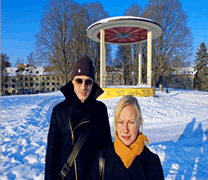In this book, we have featured videotaped life-history interviews of undergraduates in Sydney, Australia, with close ties to Bosnia and Herzegovina, on literacy and digital media; literacy narratives of undergraduates from Nigeria and China; and literacy narratives and writing process videos of transnationally connected graduate students in Urbana, Illinois, with intimate bonds to Bangladesh, Indonesia, Korea, Peru, and Mexico. This conclusion brings together common and not-so-common themes and observations shared across coauthors' literate practices. It also features coauthor Synne Skjulstad, a digital media researcher in the Institute of Media and Communication at the University of Oslo, who helps us describe a collection of research approaches that deploy digital media to collect, analyze, and present the research itself.
With Synne as coauthor on our early transnational work (e.g., Hawisher, Berry, Selfe, & Skjulstad, 2006), we began to see how a combination of alphabetic text, video, sound, and still images might support a research approach that embraces a wide variety of digital media to explore individuals' literacy narratives and literate lives. This reliance on multiple digital resources—along with a methodology that prizes the words, thoughts, and images that coauthors create and offer us—underscores, too, the importance of what we consider our feminist approach to research. As Gesa Kirsch and Jacqueline Jones Royster (2010) remind us, as researchers we need to seek a "more richly rendered understanding—listening to and learning from the women themselves, going repeatedly, not to our assumptions and expectations, but to the women—to their writing, their work, and their worlds, seeking to ground our inquiries in the evidence of the women's lives, taking as a given that the women have much to teach us if we develop the patience to pay attention in a more paradigmatic way (p. 649)." By incorporating Kirsch and Royster's insightful advice, we endeavor to keep the women and men with whom we collaborate at the forefront of the feminist methodology we have crafted and deployed across multiple settings. In this final chapter, we turn first to Synne's own literacy narrative before providing some thoughts on research methodology.

Synne Skjulstad and Andrew Morrison from Idunn Sem's (2006, May) Practice-based Method: Exploring Digital Media through the Dynamics of Practice, Theory, and Collaborative, Multimedia Performance
We begin with the digital literacy work of Synne because, in many ways, she was an inspiration for a methodology that now attempts to make use of digital media at every opportunity. Our work with her illustrates an approach in which participants detail their own literate practices through the use of video clips, websites, images, face-to-face and online life-history interviews, and literacy narratives (which, in Synne's case, became primarily an alphabetic online text but also included still images combined with videos she herself shot of her literate life). In 2004, when Gail Hawisher and Cynthia Selfe presented their research in the Designing Design seminar series at the University of Oslo (Morrison, 2004), Synne Skjulstad was very persuasive in describing the benefits that might accrue from using digital media not only as a research tool, but also as a means of providing venues through which to present research. She suggested the Web as a research site while also underscoring the drawbacks of trying to present digital research adequately in print. She noted, for example, that the research in Literate Lives (2004) lacked the richness that video clips might provide and argued that studying digital contexts in the 21st century required digital tools for method, presentation, and dissemination.

Synne Skjulstad and Andrew Morrison (2004) present "Toward Embodied Interaction." Click on image to view an excerpt from their video presentation <transcript>.
As we write today, we wonder why we weren't making greater use of digital tools for our studies. For more than twenty years prior to the publication of Literate Lives (2004), Hawisher and Selfe's work focused on digital media, but in important ways it did not. Although the two researchers studied how digital media was taken up and how it shaped what writers did, digital tools were not deployed to support this research. As the 21st century moves into its second decade, a variety of research tools have become increasingly available and, for many of us, have irrevocably changed how we approach the work of research.
With Synne as participant and coauthor, we developed strategies for studying and presenting literacy research. As mentioned, like some of the other research participants, Synne completed an online literacy life-history interview (2005, August) but, in Synne's hands, this document grew to 66 print pages interspersed with images of herself, her life, and her writing and computing experiences. She also shot footage of her typical Norwegian day in Oslo—saturated, we would argue, with activity that connects with her literate life. We present here throughout the conclusion the embedded photos that Synne was easily able to send electronically from Oslo. We note, too, that reliance on images was not new for her. Even as a young student, Synne turned whenever possible to images or multimodal representation rather than relying solely on words, and this penchant of hers—this literacy practice—continues to this day.
In the video below, Synne describes her literate efforts as an activist, working to save a park pavilion:
Click on the left image to access Synne's video on her activist activities <transcript>. Click on the right image of Synne and Vemund Barstad Bermingrud to access an Oslo newspaper account of their efforts.
previous < > CONCLUSION: Synne Skjulstad






